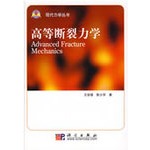28 resultados para Hopf Bifurcations
Resumo:
The dynamic stress intensity factor histories for a half plane crack in an otherwise unbounded elastic body are analyzed. The crack is subjected to a traction distribution consisting of two pairs of suddenly-applied shear point loads, at a distance L away from the crack tip. The exact expression for the combined mode stress intensity factors as the function of time and position along the crack edge is obtained. The method of solution is based on the direct application of integral transforms together with the Wiener-Hopf technique and the Cagniard-de Hoop method, which were previously believed to be inappropriate. Some features of solutions are discussed and the results are displayed in several figures.
Resumo:
The dynamic stress intensity factor history for a semi-infinite crack in an otherwise unbounded elastic body is analyzed. The crack is subjected to a pair of suddenly-applied point loadings on its faces at a distance L away from the crack tip. The exact expression for the mode I stress intensity factor as a function of time is obtained. The method of solution is based on the direct application of integral transforms, the Wiener-Hopf technique and the Cagniard-de Hoop method. Due to the existence of the characteristic length in loading this problem was long believed a knotty problem. Some features of the solutions are discussed and graphical result for numerical computation is presented.
Resumo:
<正>内容一、绪言(Ⅰ)研究湍流的意义(Ⅱ)国外开展湍流研究的情况二、湍流理论的进展(Ⅰ)先把流体动力学方程组平均的理论(a)1950年以前发展情况简述(1)Reynolds方程和混合长度理论(2)各向同性湍流的统计理论(3)具有剪应力的普通湍流理论(b)最近的剪切湍流的半经验理论(c)最近的湍流统计理论(1)E.Hopf理论(2)R.H.Kraichnan直接相互作用理论(8)Lewis等人的分子运动理论(4)Meecham理论。(5)S.Grossmann重正化群法(8)陈善谟统计动力学重复级串法
Resumo:
 《高等断裂力学》系统论述断裂力学的基本概念、理论基础、力学原理、分析方法以及断裂力学的实验测定和工程应用。深入阐明了断裂力学各个重要发展阶段的新颖学术思想和原创性工作,同时融会贯通地介绍了国内学者在作者熟悉的若干领域内的创造性贡献。 《高等断裂力学》共14章。第1章介绍断裂力学的历史背景和发展脉络;第2~5章介绍线弹性断裂力学;第6~8章论述弹塑性断裂力学;第9及第10章分别介绍疲劳裂纹扩展和界面裂纹;第11~14章阐述裂纹体弹性动力学和裂纹动态扩展。 《高等断裂力学》适合从事断裂力学研究和应用的科技工作者及工程师使用和参考,也可供力学专业的高年级本科生和研究生阅读参考.
《高等断裂力学》系统论述断裂力学的基本概念、理论基础、力学原理、分析方法以及断裂力学的实验测定和工程应用。深入阐明了断裂力学各个重要发展阶段的新颖学术思想和原创性工作,同时融会贯通地介绍了国内学者在作者熟悉的若干领域内的创造性贡献。 《高等断裂力学》共14章。第1章介绍断裂力学的历史背景和发展脉络;第2~5章介绍线弹性断裂力学;第6~8章论述弹塑性断裂力学;第9及第10章分别介绍疲劳裂纹扩展和界面裂纹;第11~14章阐述裂纹体弹性动力学和裂纹动态扩展。 《高等断裂力学》适合从事断裂力学研究和应用的科技工作者及工程师使用和参考,也可供力学专业的高年级本科生和研究生阅读参考.
目录
Resumo:
从旋波、慢变振幅及平均场近似下的密度矩阵运动方程出发,利用数值计算结果研究了开放的V型三能级系统在共振条件下通过Pitchfork分岔产生的连续波无反转激光(LWI)场和通过Hopf分岔产生的自脉动LWI场及相应的各能级粒子数布居的时间演化规律,讨论了系统各参量变化对此时间演化规律的影响。
Resumo:
烧蚀条件对飞秒激光脉冲诱导氧化锌纳米结构有重要影响。研究了800nm,150fs,250kHz的飞秒激光脉冲分别在空气中,去离子水中以及无水乙醇中垂直聚焦于氧化锌晶体表面,诱导形成不同形态的纳米结构。实验结果表明,在空气中利用飞秒激光脉冲辐照样品表面,形成了周期为180nm的纳米线;在去离子水中辐照诱导形成了由氧化锌纳米线聚集而成的"纳米球";在无水乙醇中形成出现分叉结构的纳米线。拉曼光谱分析辐照前后晶体晶相结果表明,形成的纳米结构相对于辐照前特征峰437cm-1强度有所下降,在570cm-1处的峰值则显著增强。分析了在各种烧蚀条件下诱导形成纳米结构的演化过程以及物理机理。
Resumo:
通过对单层流体浮力-热毛细对流和两层流体 B$\acute{\rm e}$nard-Marangoni对流的实验研究,探讨界面张力梯度引起的自然对流的特征及机理问题。考虑到表面张力是温度的函数,对上面是空气(或其蒸汽)的薄液层,加载水平温度梯度将使得气液表面上表面张力分布不均匀,耦合于地面的重力作用,将会驱动薄层流体形成浮力-热毛细对流运动。液层厚度和温度梯度的改变(引起系统长高比、Bond数、Rayleigh数以及Marangoni数的变化)直接影响到薄层流体的对流模式的变化,还可能使得浮力-热毛细对流从稳定发展到不稳定。本研究中以硅油为实验介质,应用高分辨率PIV技术对薄层流体的对流速度场进行了测量,观察到了对流由单胞结构向多胞结构以及由稳定对流向振荡对流的转捩过程,分析给出了对流模式结构变化的规律以及状态转变的临界参数。在浮力-热毛细对流发展过程中,流体表面的变形(形貌)和表面振荡直接反映了热毛细作用与浮力作用的耦合规律以及热毛细对流表面波的基本特征。实验中应用激光干涉技术以及高精度位移传感器对薄液层体系(液层厚度1mm$\sim$5mm)作了系统的研究,获得了微米量级面形形貌变化规律及其亚微米尺度的表面振荡特性。用FFT以及小波分析方法研究了流体自由面振荡的分岔转捩过程及通往混沌的转捩途径。该研究对理解流体热毛细对流的机理具有重要的意义。在自然界里和工程技术中,多层流体体系对流现象更为普遍。近20年来,互不混溶的两层液体体系成为了很多理论和实验研究的重要对象,其主要原因有:(1)在两层流体体系中,由于上下层对流的耦合作用,在临界点上存在HOPF分叉,使得两层模型成为非线性理论研究的理想模型;(2)两层流体模型被应用于地壳运动的研究和空间晶体生长等领域。近年,很多学者通过理论分析和数值模拟对加载垂直温度梯度的上下两层流体B$\acute{\rm e}$nard-Marangoni对流问题进行了研究。上下液层对流的耦合与竞争可以导致上下液层出现多种对流耦合模式和振荡规律,外加温差、液层厚度以及液层厚度比的变化是形成不同对流模式的重要因素。本研究以FC70和KF90-10为实验介质,应用高分辨率PIV技术对两薄层流体B$\acute{\rm e}$nard-Marangoni对流进行了测量,从实验中清晰地观测到了3种临界对流模式:机械耦合、热耦合、临界振荡,分析给出了3种对流转换的临界参数,发现临界振荡可以在峰值液层厚度比附近一个较大的区域范围出现,并且峰值厚度比远离平衡厚度比,这些结果与目前的理论研究有明显的的差异。总之,两种不同外加温度梯度方式,会导致两种不同机制的对流--热毛细对流和Marangoni对流,他们是微重力流体物理研究的重要内容。
Resumo:
运用规范势分解理论研究了Dunne-Jackiw-Pi-Trugenberger模型中的自对偶方程,得到一个静态的自对偶Chern-Simons多涡旋解,每个涡旋由5个参数描述。发现了自对偶解与拓扑数之间的关系,而拓扑数由Brouwer度与Hopf指标确定。同时,也研究了该涡旋解的磁通量的拓扑量子化。
Resumo:
By using the gauge potential decomposition, we discuss the self-dual equation and its solution in Jackiw-Pi model. We obtain a new concrete self-dual equation and find relationship between Chern-Simons vortices solution and topological number which is determined by Hopf indices and Brouwer degrees of Psi-mapping. To show the meaning of topological number we give several figures with different topological numbers. In order to investigate the topological properties of many vortices, we use five parameters (two positions, one scale, one phase per vortex and one charge of each vortex) to describe each vortex in many vortices solutions in Jackiw-Pi model. For many vortices, we give three figures with different topological numbers to show the effect of the charge on the many vortices solutions. We also study the quantization of flux of those vortices related to the topological numbers in this case.
Resumo:
By using phi-mapping method, we discuss the topological structure of the self-duality solution in Jackiw-Pi model in terms of gauge potential decomposition. We set up relationship between Chern-Simons vortex solution and topological number, which is determined by Hopf index and Brouwer degree. We also give the quantization of flux in this case. Then, we study the angular momentum of the vortex, which can be expressed in terms of the flux.
Resumo:
We investigate the topological properties of N(N >= 1) disclination lines in cholesteric liquid crystals. The topological structure of N disclination lines is obtained with the Hopf index and Brouwer degree. Furthermore, the knotted x disclination loops is proposed with the Hopf invariant. And we consider the stability of such configuration based on the higher order interaction. At last, the evolution of the disclinations is discussed.
Resumo:
By using phi-mapping topological current theory and gauge potential decomposition, we discuss the self-dual equation and its solution in the SU(N) Dunne-Jackiw-Pi-Trugenberger model and obtain a new concrete self-dual equation with a 6 function. For the SU(3) case, we obtain a new self-duality solution and find the relationship between the soliton solution and topological number which is determined by the Hopf index and Brouwer degree of phi-mapping. In our solution, the flux of this soliton is naturally quantized.
Resumo:
Recently, as oil exploitation has become focused on deepwater slope areas. more multi-channel high resolution 2D and 3D seismic data were acquired in the deepwater part of the Qiongdongnan Basin, northern South China Sea. Based on 3D seismic data and coherence time slice, RMS and 3D visualization, a series of deepwater channels were recognized on the slope that probably developed in the late Quaternary period. These channels trend SW-NE to W-E and show bifurcations, levees, meander loops and avulsions. High Amplitude Reflections (HARs), typical for channel-levee complexes, are of only minor importance and were observed in one of the channel systems. Most of the detected channels are characterized by low-amplitude reflections, and so are different from the typical coarse-grained turbidite channels that had been discovered worldwide. The absence of well data in the study area made it difficult to determine the age and lithology of these channels. Using a neighboring drill hole and published data about such depositional systems worldwide, the lithology of these channels is likely to be dominated by mudstones with interbedded thin sandstones. These channels are formed by turbidity currents originated from the little scale mountain river of mid-Vietnam in SW direction and were probably accompanied by a relative sea level drop in the last glacial age. These channels discovered on the northern South China Sea slope are likely to be fine-grained, mud-dominant and low N:G deposits in a deepwater paleogeographic setting. (C) 2009 Elsevier Ltd. All rights reserved.

